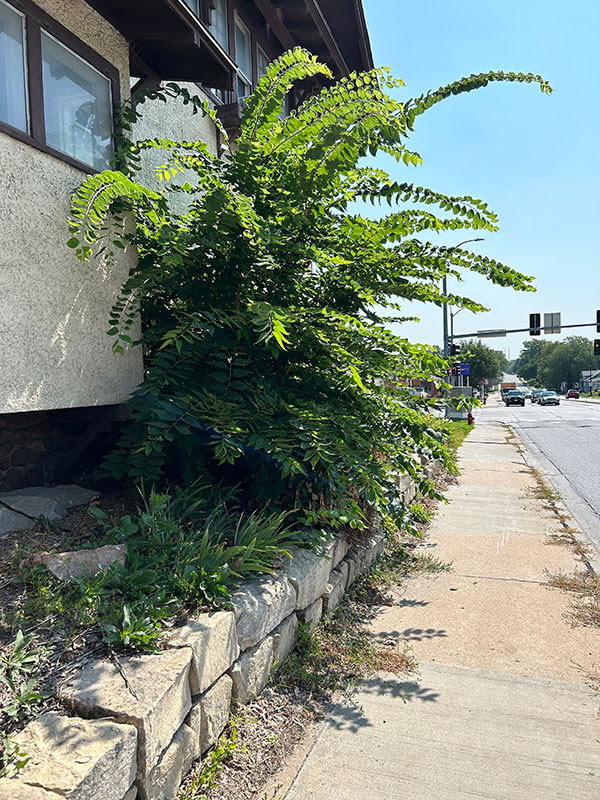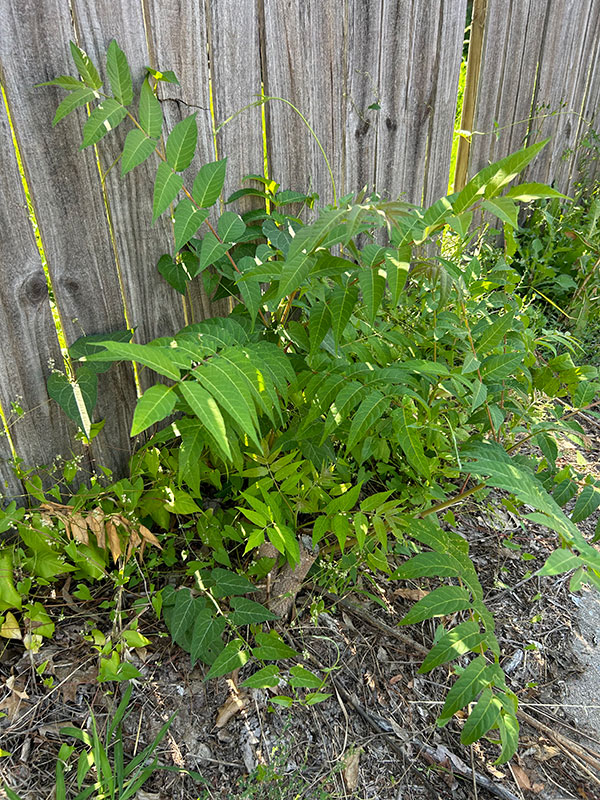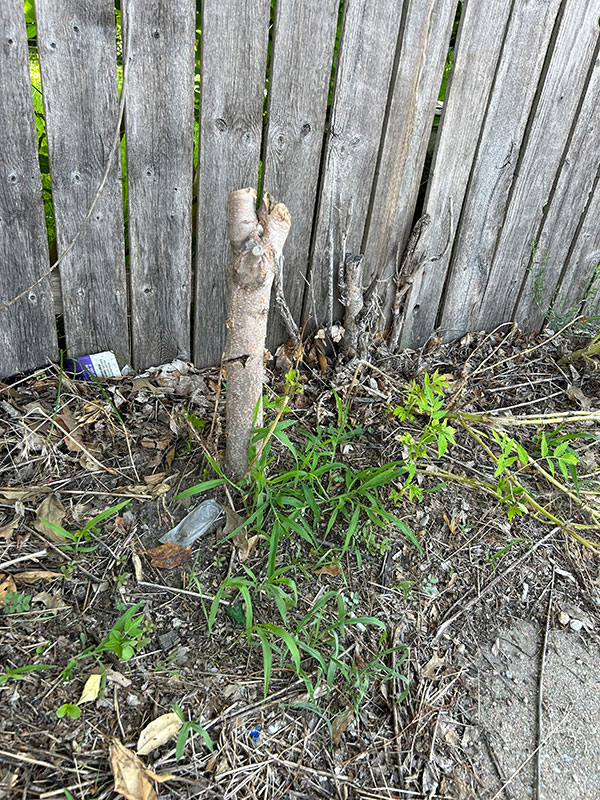
A weed is any plant growing where it isn’t wanted and, although they are less common than other weeds, trees and shrubs can also become weeds. Usually, these plants get started through seed dispersal by wind or wildlife and they can pop up in the most inconvenient places – fence lines, right next to a home’s foundation, planters or even in the middle of the lawn.
And it doesn’t matter what tree species it is, if it’s growing in the wrong place and can’t be moved, then control is necessary.
Mechanical Control
Mowing – Trees with relatively small seeds, like elm and maple, can often be controlled with repeated mowing when they appear in a lawn. However, trees with large seeds like acorns will not be well-controlled; they will continue to regrow even after repeated mowing.
Hand pulling - If the tree is small enough, hand removal is possible and avoids the need to use a herbicide. But it’s amazing how quickly the first strong tree root develops, anchoring the plant firmly in the soil. To make hand pulling easier, wait until the soil is very wet - after a few days of rain or a deep soaking irrigation.
Often seedlings less than a foot tall can be hand pulled, but this varies by species and soil moisture level. Grip the tree with both hands and pull upward with even pressure. Seedlings frequently snap off at ground level if pulled from the side or given a quick yank and will regrow from the crown. The goal is to remove the seedling along with a good portion of its root system.
Digging – Weedy trees can also be removed through digging, either with a shovel, dandelion digger or garden knife depending on the size of the seedling or tree.
 Chemical Control
Chemical Control
When mechanical removal is not possible, then a herbicide is another option and there are several potential methods of application. Chose an application method based on tree size.
Spot spray leaf application – Small seedlings or resprout growth can be treated with an over-the-top leaf application. Thoroughly wet all the leaves, using a herbicide diluted according to label directions. Be careful to avoid drift or spray on non-target plants. Herbicides commonly used include glyphosate or triclopyr.
- Glyphosate (RoundUp) is a nonselective herbicide and will kill any plant to which it is applied, including grass. It’s very effective at killing woody plants and has a short soil residual of only 14 days.
- Triclopyr is a common selective herbicide that works well for killing woody plants. It can be found in clover, brush and poison ivy killer products.
Basal bark application – This technique works best with small to medium-sized trees which still have thin non-woody bark, allowing good absorption of the herbicide. Spray the trunk from the soil line up to 12-15 inches above the ground, all the way around the tree. The bark should be thoroughly wet, but not dripping. Use a diluted spray solution, with the same herbicides mentioned above under leaf application.
 Cut stump treatment – This technique can be used with any weedy tree that has developed a strong enough trunk that it cannot be hand pulled. It’s usually recommended for trees with trunk diameter of 4 to 6-inches, but can also be used on smaller trees. Glyphosate and triclopyr are also used with this method, but in a concentrated form – not diluted.
Cut stump treatment – This technique can be used with any weedy tree that has developed a strong enough trunk that it cannot be hand pulled. It’s usually recommended for trees with trunk diameter of 4 to 6-inches, but can also be used on smaller trees. Glyphosate and triclopyr are also used with this method, but in a concentrated form – not diluted.
Cut the tree down close to ground level and brush away any sawdust. Then immediately paint or spray the trunk surface with concentrated herbicide. It’s important to apply the herbicide right away, before the tree starts to seal off the wounded area, so enough herbicide is translocated into the root system.
Occasionally, a tree will resprout after a cut stump treatment. In this case, the stump can be recut and treated again, or the sprouts can be sprayed using the leaf application method.
Final Pointers
Don’t allow herbicide, dilute or concentrated, to contact exposed root surfaces of desirable trees.
Stumps of eastern red cedar, Juniperus virginiana, to not need to be treated with herbicide. Cutting the trunk below all green foliage will kill the tree and it will not regrow.
Always read and follow label directions when using any herbicide, including the personal protective equipment you are required to use. Stay safe!
Reference to commercial products is made with the understanding that no discrimination is intended and no endorsement by Nebraska Extension is implied. Mention does not imply approval or constitute endorsement by Nebraska Extension. Nor does it imply discrimination against other similar products.
Images by Nancy Packard.
- Tree of heaven is a common weedy tree with soft wood and little aesthetic value to Nebraska landscapes.
- Cut the trunk of larger weed trees as close to the ground as possible and treat using the cut stump method to prevent regrowth.